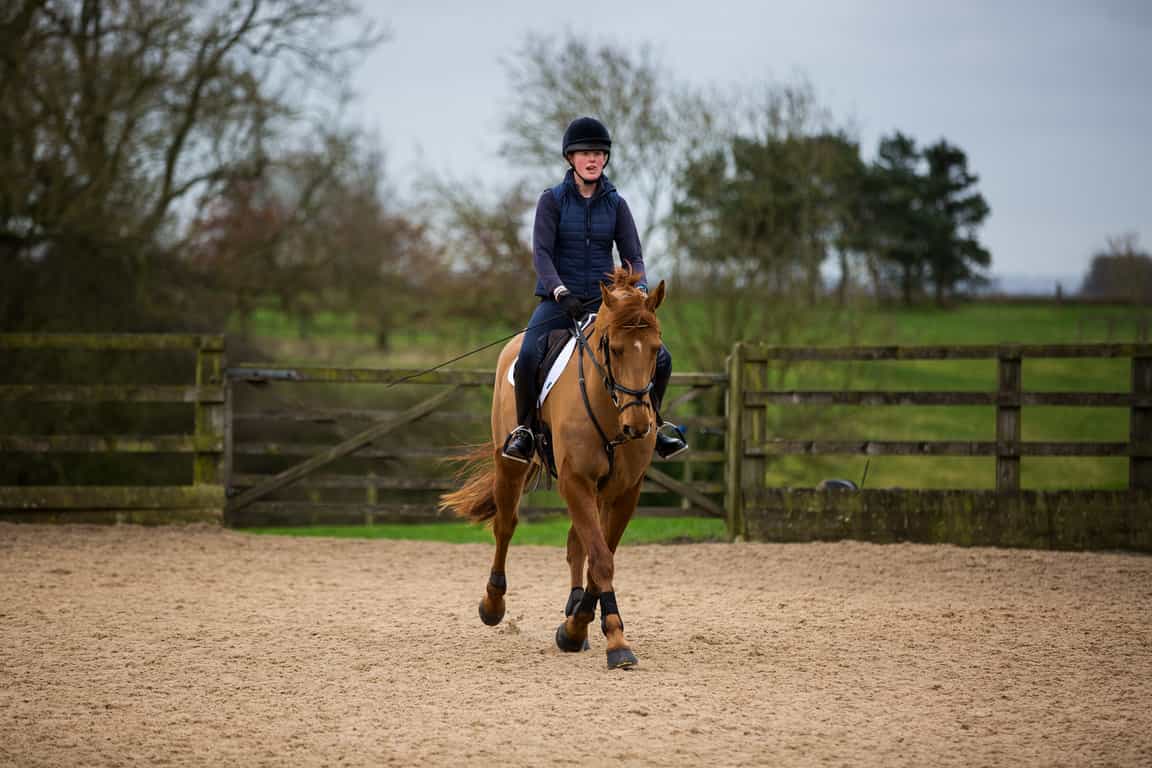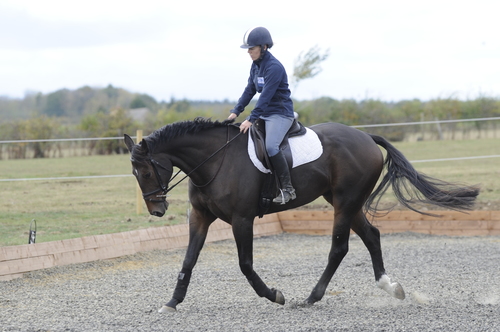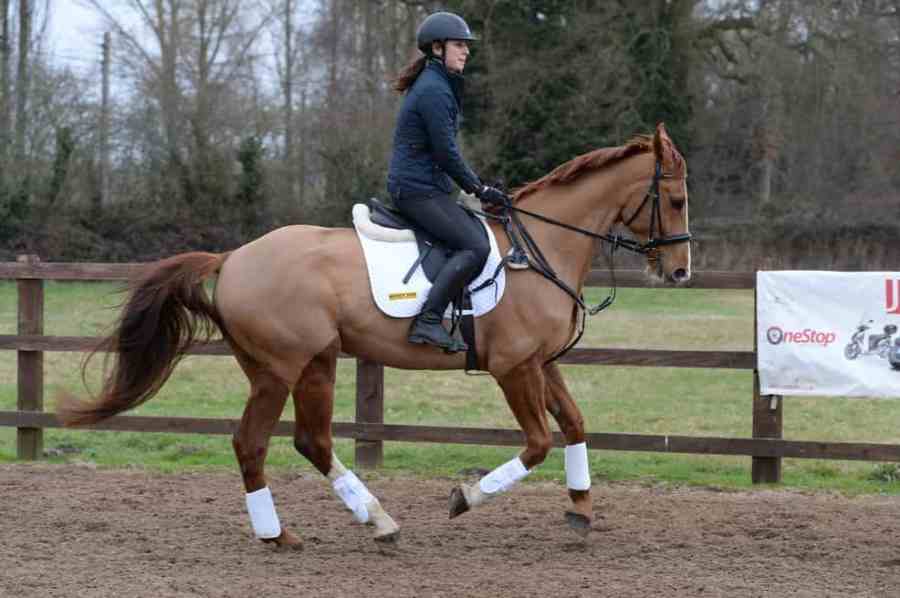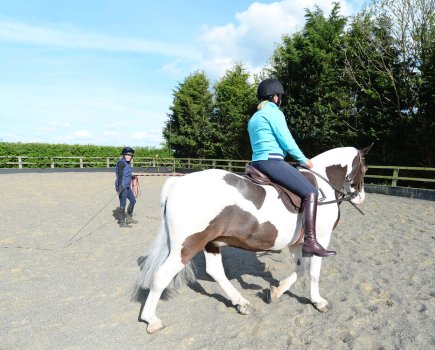Find out how to settle your horse’s spook with these tips from dressage trainer Ros Collins.
With horses that get anxious, spooky and tense in new situations, it’s about building confidence so that he learns to trust you, the rider.
A good way to start your schooling session and to help you both relax is to walk round and chat to your trainer or a friend.
As you’re doing this, and if it’s safe to do so, ride on a longer rein to encourage your horse to stretch.
Keep talking to him if he needs reassurance, or a rub on his neck can help. All the early work in your new surroundings needs to be pressure free, so your horse learns that there’s nothing to feel anxious about.
1. Dealing with scary objects
Sometimes it’s certain objects in your arena that your horse takes a dislike to.
If you know your horse can be a bit spooky, don’t go into the arena and approach any potentially scary objects straight away.
Begin working him on the three-quarter line and spiral your way past the object, riding a circle away from it and then back past the object a little way before circling again.
As you ride past it, release your inside hand and scratch your horse’s neck to ensure you’re not holding on.
2. Keeping control of the inside hindleg

Being able to control your horse’s hindleg will help you to control spooky behaviour and leg-yield is the perfect exercise to do this.
Try leg-yielding from the three-quarter line to the track. Reward your horse after doing it correctly, a rub on his neck is all that’s needed.
To move this exercise on, you can ride a three- or four-loop serpentine, ask your horse to cross his inside hind for two or three steps as you cross the centre line.
As you change direction, try patting your horse with your new inside hand as this encourages you to keep a soft, forward contact rather than overusing it.
3. Giving him freedom
I see a lot of riders riding defensively, taking too much contact on the inside rein to stop their horse spooking.
To help you relax, repeat the exercise on the serpentine from point 2. Push your inside hand forwards and pat our horse on the neck.
It’s important when bringing your hand back that you don’t pull back with your inside hand as this blocks your horse’s inside hind leg from coming underneath him, stifling his movement and rhythm.
Repeat this exercise on both reins, and notice how after a few minutes, your horse relaxes.
4. Work on straightness
After a short walk break, it’s time to work on straightness.
Try riding shoulder-in on the three-quarter line down the long side of your arena. To help you with this exercise, ride the following pattern:
Shoulder-in for 5m
Ride across the diagonal for 2m
Straight for 2m
Repeat
Always repeat any exercise on both reins so that your work makes your horse as supple and even as possible.
5. Develop an adjustable canter
Once your horse is straighter and more relaxed, you can work more on the canter.
It’s important that your horse’s canter is adjustable and you can work up and down the gears smoothly.
Being able to do this improves engagement, keeps your horse in front of your leg and once you have this cracked, you’ll find your horse won’t think about spooking.
Try this
Maintain an even canter rhythm and length of stride on a 20m circle
Spiral the size of the circle down
Circle until your horse can’t go any smaller and his canter feels collected
Reducing the size of the circle helps him collect naturally, but his handlers should remain active.
Feel what’s happening and build up the number of collected strides gradually as this is hard work for your horse.
After a few strides of collected canter, increase the size of the circle again and move the canter forwards.
6. Let him stretch

After asking a horse for more collected work, I always like to get them thinking and moving forwards again.
Ask your horse for medium canter down the long side of the school and then ride onto a big circle.
On this circle, let your horse take the rein forwards so that he can begin to stretch in his frame, encouraging him to relax his muscles in the lumbar region behind the saddle.
Go back to trot with the same position. It’s important to spend time allowing your horse to stretch at the end of a schooling session.









